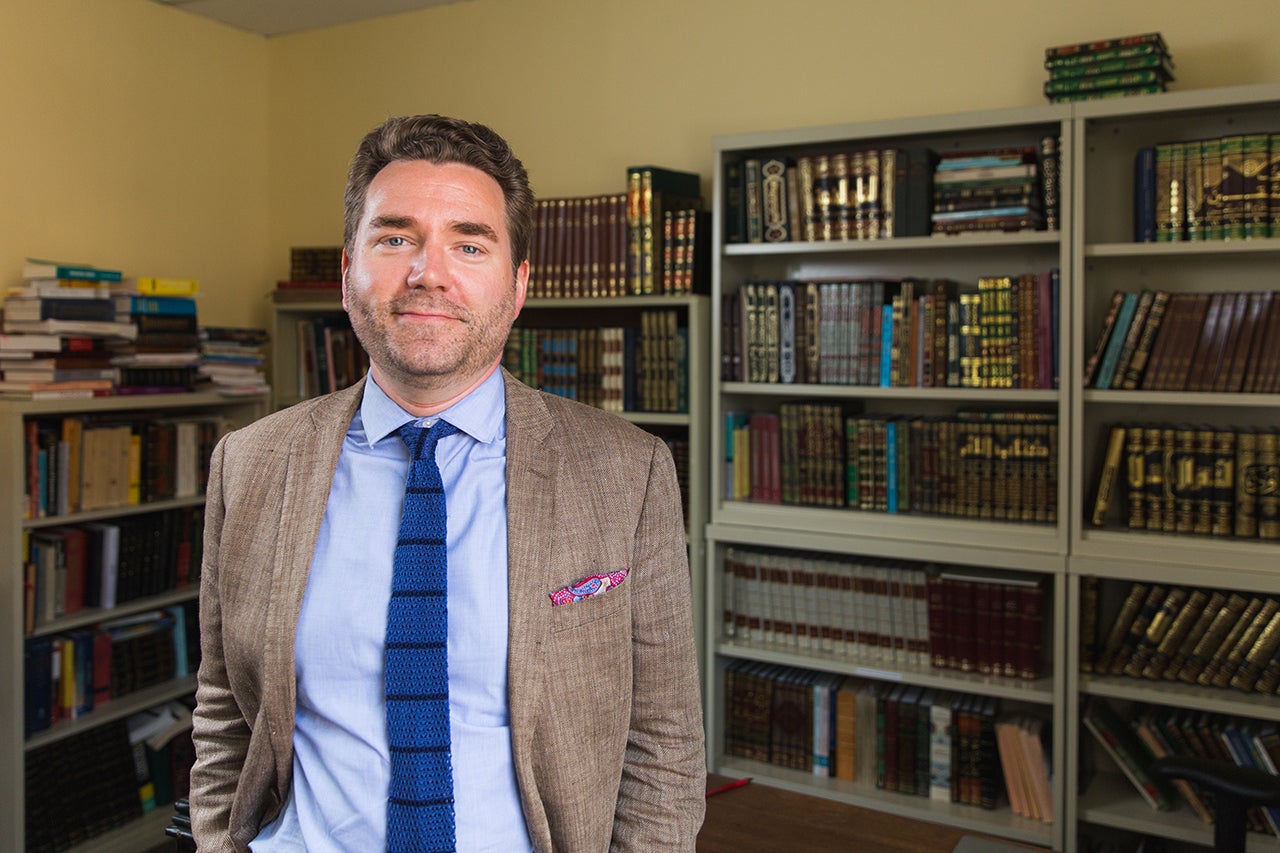When there’s a 14th-century Arabic sex manual on the syllabus, there’s got to be some connection.
That’s exactly what Garrett Davidson hopes for his students: that they come to see what they have in common with a people and a culture that are so foreign to them. He wants those connections to lead his students to a more informed understanding of the Arab world and its cultures as a whole.
“It is very rewarding to see students engage with a text across so much time and space and connect with their very-distant authors and realize they have more in common with them than they first imagined,” says Davidson, assistant professor of Arabic and Islamic studies in the College’s Asian Studies Program. This past semester, he taught courses on Arabic cinema and Arabic literature – both with the same ultimate goal: to foster connections with a part of the world that students might otherwise not know.

Professor Garrett Davidson teaches courses in Arabic literature and Arabic cinema. (Photos by Mike Ledford.)
“This is a region that’s very misunderstood,” says Davidson, adding that 21st-century American cinema hasn’t helped the matter. “Arabs tend to be villainized and dehumanized in Hollywood films. So, one of the goals is to humanize them for these students – to connect them to these societies in a way that challenges their perceptions.”
And what better way to make that connection than with movies?
“This course explores political and social issues that are very foreign to students – and in a very foreign environment. So, using a medium that they are so familiar with – that they are comfortable with – makes it more approachable,” says Davidson, noting that the course includes films from all over the Arabic world, from Morocco to Iraq, providing the perfect channel for exploring any number of political, historical and cultural issues. “These films are exposing them to important themes in modern Arab societies and cultures in ways they really connect with.”
Davidson knows that this kind of exposure to an unfamiliar world can change everything for a student. It’s what motivated one former student to follow up his Arabic cinema course with a semester in Morocco. It’s also what led Davidson himself to his passion for Arabic studies, particularly Arabic manuscripts.
“My interest started when I was an undergrad at the University of Washington. I became friends with some international students from Kuwait, and that exposure kind of led me to take a course in Arabic,” says Davidson, who went on to study at the University of Kuwait and the American University in Cairo and then live all over the Middle East – from Jordan and Saudi Arabia to Turkey and India. “Part of that was necessity: The manuscripts I study are primary sources that aren’t reproduced, so you have to go to them.”
But, as much as he treasures holding those 800-year-old texts in his own hands and following the handwritten histories scribed in the books’ margins, Davidson understands that sometimes you have to bring the text to the people. And that’s what he does for the students in his Arabic literature class.
“This course introduces students to Arabic literature with a survey of mostly classical works, with a little modern in there, too. It explores the more salient themes in Arabic literature in relation to their greater cultural and historical contexts,” he says. “It uses the text as a mirror of the society that produced it.”
And, sometimes what these texts reflect comes as a surprise to his students. Like that 14th-century sex manual, for example.
“It’s interesting to see how people in a different time and place thought about sex and their bodies,” says Davidson. “This text shows students that Arab culture was in many ways more open and honest about sex than even contemporary American culture is.”
It also shows students that Arab stories are human stories. And that is the fundamental connection.




